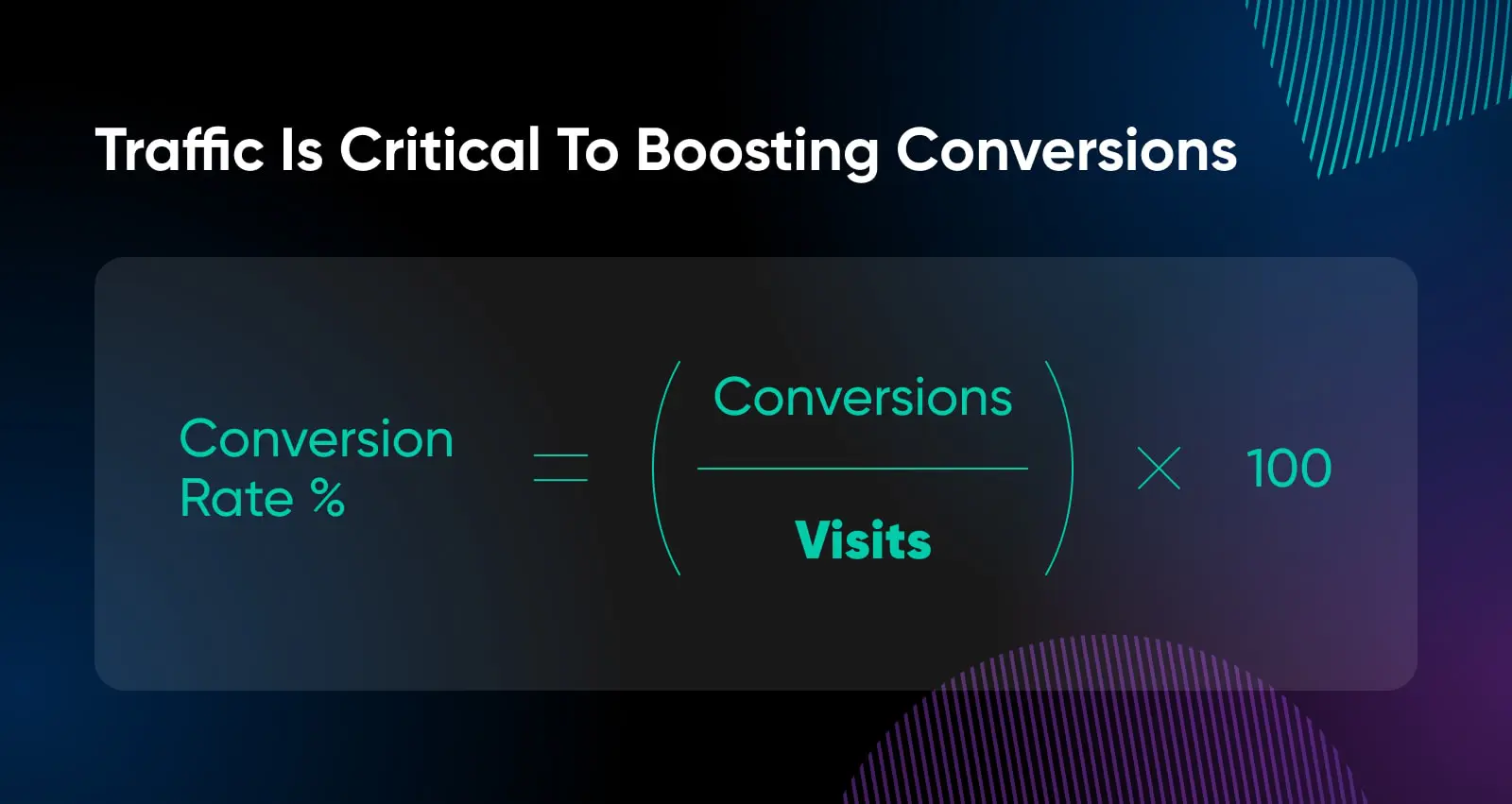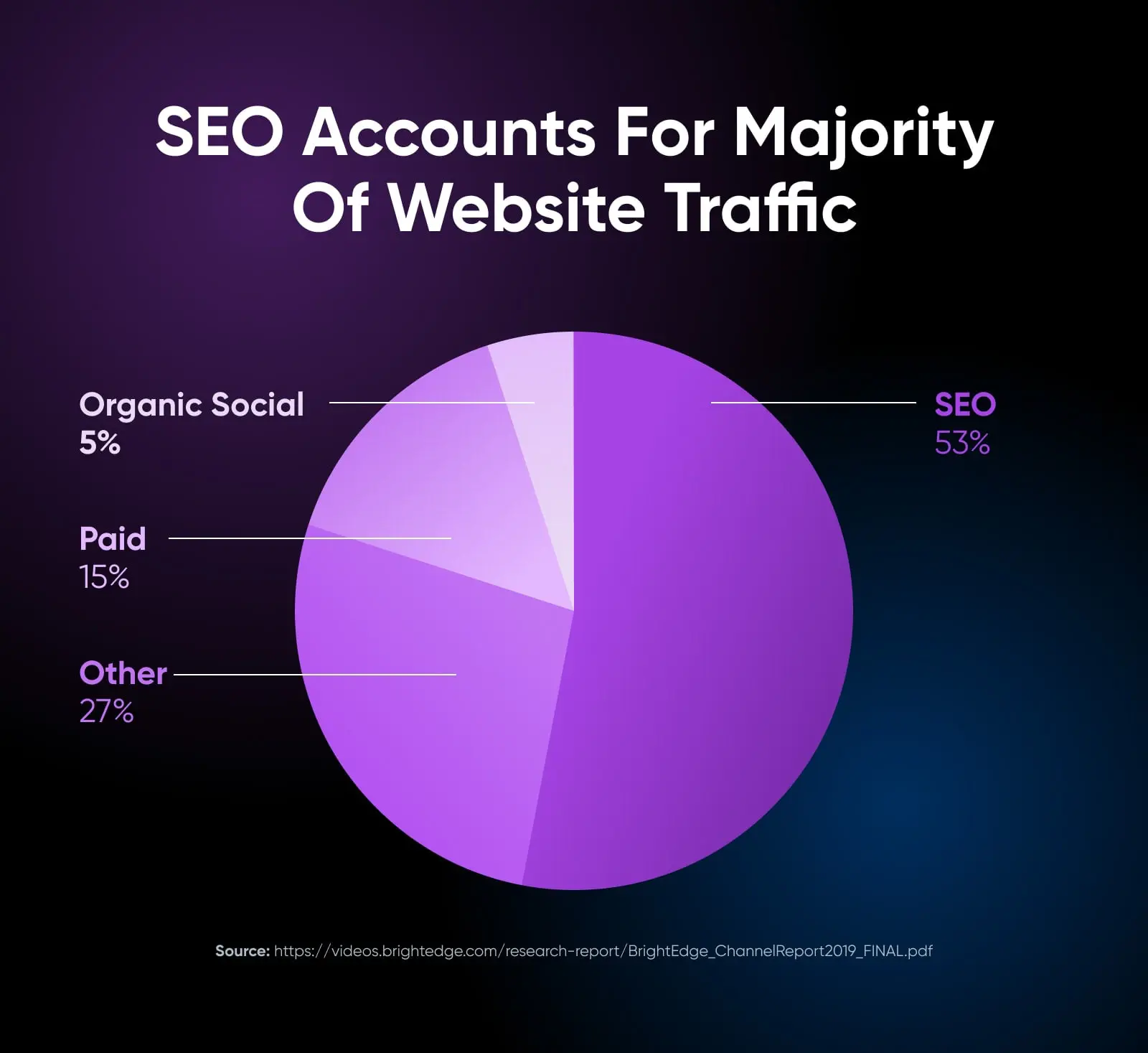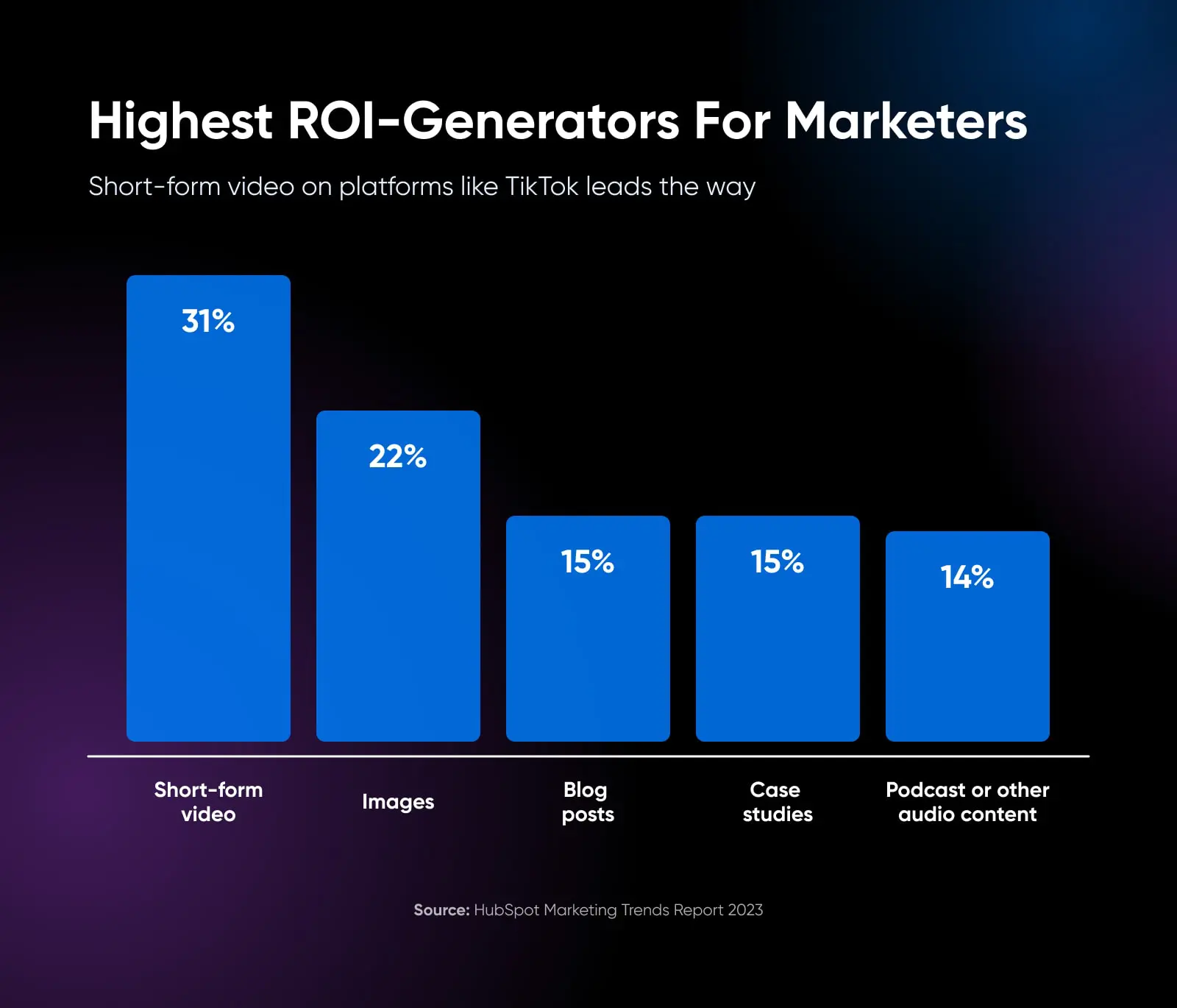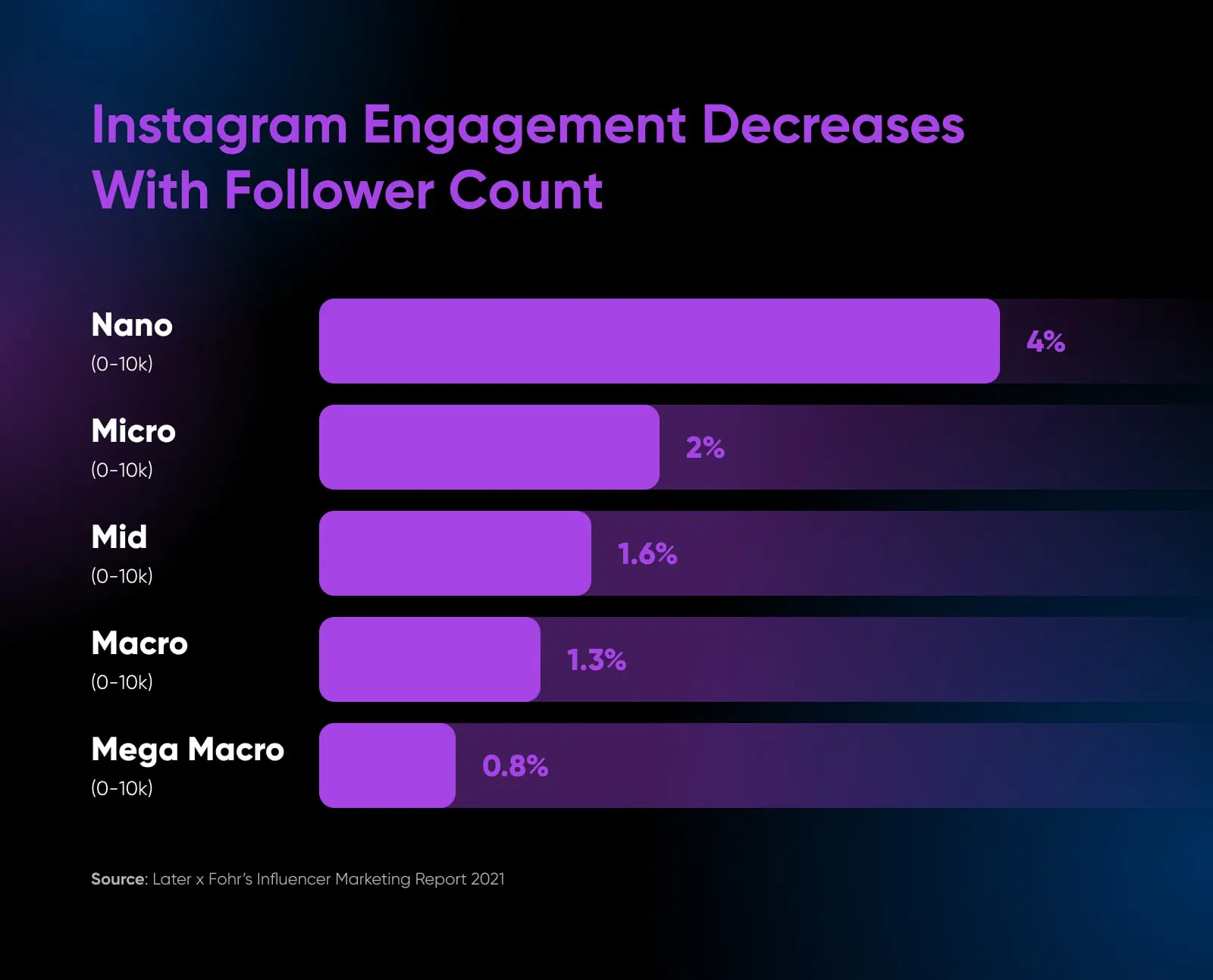Fun fact – There are around 2 billion websites on the internet, with new ones created every second.
That’s because, these days, anyone can build a stellar website.
And that’s a beautiful thing.
How else could you discover some of the internet’s most creative, mind-boggling and, well, useless websites via The Useless Web?
Or, explore all the touchstones that got us to where we are today via Internet Artifacts (check out the main Neal.Fun website for more)?
However, that means that one of the most important tasks a business owner, full-time blogger, or professional marketer can do is get people to actually find your website.
Making yours visible in the ever-growing crowd can be challenging.
And doing it on a budget can feel quite overwhelming, if not downright impossible today.
This is where digital marketing to promote your website becomes key.
By deploying a combo of creative marketing techniques, you can increase awareness around your site, which is the first step towards encouraging people to visit it. And, hopefully, complete a transaction!
The best part is that effectively promoting your new website can be done on the cheap, as long as you have some time to spare and know where to start.
Which is right here.
Experiment with these 30 free (or inexpensive) ideas to promote your website and watch the traffic roll in!
Why It’s Vital To Drive Valuable Traffic To Your Website
What we mean when we say web traffic is the number of visitors your site gets on a regular basis. High-traffic sites have more page views per day or month than low-traffic sites.
It’s probably no grand revelation to you that website traffic is important.
Traffic
‘Traffic’ or ‘web traffic’ refers to the number of online users who visit a website. This is usually determined by tracking the amount of sessions, or visits, a web page receives. More advanced metrics reveal more nuanced details about user behavior.
Read MoreAfter all, visitors are critical to conversions. A conversion refers to an action you want your users to take, like making a purchase. When somebody buys something on your site, for example, they’ve converted from regular users into customers. Conversions can be many other things as well, such as signing up for a newsletter, creating an account, or completing a form. Either way, to improve your conversions, you’ll naturally want to increase the traffic on your site.

However, traffic shouldn’t just be a numbers game. Good traffic is essential.
Good traffic refers to visitors who stay a while, interact with your content, return multiple times, refer their friends, and of course, ultimately convert. Having just 500 visitors who convert is better than having 5,000 visitors who leave quickly, never to purchase or return.
30 Tactics For Promoting Your Website
So how do you go about attracting and retaining the valuable kind of traffic that converts?
Grab a snack and settle in, because we’re going to be here a while diving deep into 30 affordable, achievable website marketing tricks.
Refresh Your Digital Directory Listings
First up, a local business marketing strategy which is all about updating or creating business profiles across the internet to make sure they’re accurate, optimized, and ready to direct interested parties your way.
1. Google Business Profile
Google Business Profile (formerly Google My Business) is a free service that enables your business to show up when potential customers use Google Search or Google Maps to look for products or services near them.
Your profile here should be complete with accurate hours, location information, description, and of course, a link to your website.
Bonus: Registering with Google’s business directory may help improve your ranking on search engine results pages (SERPs) for searches related to your website.
2. Bing Places (Really!)
Google may be the big kid on the block but, believe it or not, other search engines and directories exist!
And people (maybe even your potential customers) use them. Bing offers a freebie website promotion tool called Bing Places.
One test found that claiming and optimizing Bing Places listings helped a business with multiple physical locations grow both website traffic and conversions.
3. Yelp
Yelp is another directory and review source that can drive visitors not just to your physical location(s) but to your website to learn more, make reservations, complete transactions, and more. Make sure your information is up to date, respond to reviews, post photos and menu options, offer discounts, and link to your website and blog.
4. Other Online Directories To Try
Every link helps, right? The internet is filled with free online business directories. Once you’ve checked off the ones we’ve already mentioned, go to town with any others. These sites will get you started: Local.com, eLocal, and Insider Pages.
You may even want to seek out platforms that serve your specific niche. Spafinder is an example of Yelp of sorts for local spa businesses.
Keep in mind you usually won’t need to pay for a basic listing on most directories. If payment is required, make sure you understand the payment structure to ensure that the return will be worth it to you.
Get Crafty With Content Marketing
With your online presence refreshed, let’s roll up our sleeves and get into some real work — creating and enhancing value-adding content to power a clever content marketing strategy.
5. SEO Keyword Research

When you are looking for the answer to a question or solution to a problem, your first resource is probably a search engine like Google.
This means Google searches can be a powerful source of website traffic for you, if you play your cards right.
When potential customers search for something on Google, they aren’t likely to look down past the top two or three results. So your goal is to get any content related to the keyword a user searches up near the top of the Google SERP. That’s where search engine optimization (SEO) comes in.
SEO is the art and science of increasing your website’s visibility in organic search engine results. One of the best ways to optimize your website is by filling your content with keywords and phrases that people will likely search for. SEO is a basic but essential method of bringing traffic to your website. Without it, your website can get lost among the thousands of voices clamoring for your visitors’ attention.
SEO
Search Engine Optimization (SEO) is the practice of improving a site’s ranking in search results. Search results are aggregated based on a number of factors, including a site’s relevance and quality. Optimizing your site for these factors can help boost your rankings.
Read MoreTo get started, learn how to do keyword research using Google Ads Keyword Planner to find keywords related to your website and get stats on how often they are searched in your target market.
While SEO can be cost effective — if you do the work yourself, you won’t have to pay anything for it — optimizing your website for search engines is definitely not a quick fix. It takes time to nail SEO methods, to optimize your website, and to keep it up to date as trends, competitors, and your business or website changes.
If you don’t have the time but do have the funds, you might consider hiring or contracting with a marketing pro to accelerate results.
Related: 25+ Best Free And Paid SEO Tools Around (Bookmark These!)
6. SEO-Informed, Expert-Level Blogging
Integrate original, relevant blog content into your website. Of course, this is also a prime place to include SEO keywords and build a following of loyal readers who will come back for more.
Today’s surfers love multimedia, so be sure to include images, videos, and even audio (more on that later) and always encourage readers to share posts they love on social media (another tactic we’ll talk about soon!).
To give your content an authoritative boost, contact and interview experts in your field. Your own list of five ways to bug-proof your garden may draw clicks, but ten tips from a long-time organic farmer? Now you’ve got a highly-shareable post that lends credibility to your entire site.
If your sources include well-known names that boast a sizable following of their own, you may draw their fans to your site. Let your sources know when you publish, and you may get a digital shoutout.
Related: 36 Brilliant Blogging Tools To Help You Write Better, Publish More, And Increase Traffic
7. Guest Blogging
Once you’ve got the hang of your own blog, it’s time to set your sights on others in your market.
To get your name out there, search out blogs that accept guest blogging pitches. Peruse their posts, take a look at their submission guidelines, and polish up a pitch to send over. If your pitch is accepted, make sure to include a link to your website in your bio to send traffic your way.
8. Add Your Website To Search Engines
Set up Webmaster Tools on Bing and Search Console on Google, ideally as soon as you set up your website. Doing so makes sure your site is indexed with them and will be included in their search results. It will also allow these platforms to communicate with you about any problems or recommendations for your website.
9. Email Marketing
Now that you’ve found your voice and have plenty of content creation experience, you can branch out into email marketing.
Email marketing is a tried-and-true tool for communicating with and reengaging your existing customers, and converting and retaining the newer ones. It essentially involves (legally!) collecting the email addresses of any potential customer and then sharing content — newsletters, promotions, discounts, and information — to build relationships. The best part is that there are tons of free email marketing tools like HubSpot or Mailchimp that are super intuitive and free or no cost at all.
Year after year, email has shown to be a preferred channel for consumers and marketers alike.
10. Link Building
Internal links direct users to other pages within your website, while external links guide them to external web pages. A balanced presence of both types of links is crucial for enhancing your website’s user experience (UX) as well as SEO.
User Experience (UX)
User Experience (UX) refers to how online visitors interact with a website. Users often evaluate their virtual experience based on a site’s usability and design, as well as their general impression of its content.
Read MoreAs a website owner or marketer, it’s imperative to also focus on another type of link. Backlinks are links on external web pages that point back to your site. For instance, if someone includes a link to one of your blog posts in an article on their travel website, that would be a backlink.
Backlinks are critical because they:
- Make your website visible to a new audience
- Bring in new visitors to your site
- Signify to search engines that your content is valuable and worth linking to, thus boosting your search engine rankings (it’s all connected!)
As you probably guessed, quite a bit of planning goes into building a fresh and valuable web of backlinks. Luckily, we have a thorough guide where you can learn how to create a link building strategy.
Link Building
Link building refers to generating ‘backlinks’ (also known as ‘inbound links’) to your website. Link building is largely regarded as an important part of a successful SEO strategy.
Read MoreStrategically Repurpose Content
Drowning in content?
That’s exactly where you want to be to excel at these next few website promotion tips.
11. E-Books
E-books are a fantastic tool for drumming up deeper engagement and conversions on your website.
The good news is that if you run a website with a lot of published content, you might already have the makings of an e-book on your hands! If you’ve written a ton of blogs on a single topic, for us, that’s definitely WordPress, you should be able to pretty easily compile them into one e-book to create an ultimate resource.
With an e-book ready to go, you can launch new marketing initiatives, such as:
- Using the e-book as a lead magnet for which visitors just have to provide their email addresses to access
- Promoting the e-book on your social media pages to gain followers and drive traffic back to your site
- Holding a giveaway for one lucky person who signs up to download your e-book
12. Infographics
Infographics are great because they make existing content more fun to look at and much more shareable. As such, they are also great sources of backlinks to your site.
If you don’t have an eye for design, start with a template from a website like Infogram or Canva. And when designing infographics and incorporating them into your site, keep your entire audience in mind — make sure the graphics are accessible to all users.
Stay Active On Key Social Channels
We’re all familiar with social media and how the number of platforms and types of content you’re supposed to be posting seems to grow with every passing month.
The trick to being consistent and successful on social media is identifying where your audience interacts the most and then building a social media strategy focusing on those core channels.
Want to reach a lot of founders? See how you do on LinkedIn. Are the visuals around your product or service a big selling point? A visual platform like Pinterest may serve you well.
Once you know your niche, here are a few tactics you can quickly implement across various channels to connect with your audience and drive them toward your website.
13. Facebook
It doesn’t cost a cent to create a Facebook account to promote your website or small business. Which is great, because it’s still the social platform with the most monthly active users.
Once you’re on Facebook, join/form groups or create a business page to interact with your followers, build a community, and share your content. Drive engagement and spread brand awareness with discounts and giveaways (more details on these later!) that reward Facebook followers who share your posts or tag friends.
14. Pinterest
Pinterest is a highly visual social network. If your website or brand focuses on art, design, crafts, style, DIY projects, or anything else with high visual impact, try a Pinterest business account to promote your website and biz.
Create boards and fill them with pins to share your style, establish your expertise, and find your people, and, of course, promote your content and brand!
15. Instagram
To capture an audience that’s really active on social media, you may want to set up an Instagram account.
Aside from the still images that Instagram was built on, you can also share videos on your profile, as well as Reels and Stories. Since video has the highest ROI out of all media formats, we recommend trying your hand at creating short, simple, and visually pleasing videos to show up more often in follower feeds and increase awareness of and engagement with your brand. Make sure your branding is clear and your message succinct and memorable, as attention can be fleeting on social media.
Use the bio section of your Instagram to post links to your website, individual blogs, and anywhere else you want to drive user traffic.
16. TikTok
Of all video formats, short-form video has the best performance when it comes to ROI, lead generation, and engagement.
Enter TikTok.
TikTok hinges on short-form videos, which are especially ideal for demonstrating businesses with something visual to offer, like restaurants, clothing retailers, and so on. Additionally, its impact is far-reaching, especially among younger generations who are wielding more spending power as they enter the workforce.
Similar to Instagram, businesses can put links in their bio to direct TikTok users to their website, etc.

17. LinkedIn
Depending on your website’s purpose and brand, a LinkedIn company page might be the perfect social tool to drive traffic.
Leverage it by completing an interesting profile and building connections. Follow influential people in your field and read what they share, join (or create) relevant groups, post content from your website’s blog (with links) often, and comment regularly on other posts.
18. YouTube
Creating YouTube videos can help you market your brand and likely improve your presence on Google SERPs, as Google owns YouTube.
Make sure your video titles and descriptions apply keywords that align with what your target audience wants to learn, and that your descriptions link to your website. Include a call-to-action in the video — ideally one that takes viewers to your website.
Creating video content may be free, but it isn’t a walk in the park, of course, and can take plenty of time to get right. If you’re looking for a simple approach just to get your channel off the ground, try:
- Creating video versions of existing content, either by recording yourself or using stock graphics
- Developing video summaries of some of your latest or most popular content
- Doing video interviews with internal experts that might not translate well as regular articles
No matter how you do it, putting together high-quality videos for your website does and should require some work. To expand the reach and hopefully ROI of all this effort, embed YouTube uploads on your website and share to other social platforms.
19. Podcasting Platforms: Spotify, Apple, Etc.
Podcast listening is on an impressive upward trend.
Millions of people follow and listen to podcasts on a regular basis. If you’re up to creating your own podcast and committing to releasing new episodes periodically, then you can tap into a huge potential source of website traffic.
There are several upsides to going with the podcast approach, such as:
- Low(ish) barrier to entry, since you really only need basic recording equipment.
- Podcast listeners are used to long-form content, so no quick cuts or complicated editing is needed.
- You can launch your podcast on various platforms for free or on the cheap (Spotify is free, Apple’s basic offering is free, and so on) to broaden your reach.
To be fair, creating a podcast isn’t as easy as just picking up a microphone and talking your listeners’ ears off. If you want to sound professional, you’ll probably need to work out a script in advance for each episode. Plus, you may need to invest in better recording equipment than just a headset if you want to maintain a high level of quality.
20. Cross-Promote With Other Businesses On Social

At its essence, cross-promotion revolves around collaborating with businesses with which you can build a reciprocal relationship. AKA — you scratch their back, they scratch yours!
Cross-promotion occurs when two or more businesses join forces to endorse each other’s products or services to their respective target audiences on social media and beyond. In addition to creating brand awareness, it can generate actual sales, subscriptions, and other types of conversions.
In contrast to traditional advertising, cross-promotion is inherently cooperative — and affordable. Likely, you’ll only have to pony up free products/services and time, versus shelling out actual cash for ads.
It’s crucial to note that the key to a successful cross-promotion lies in identifying a partner whose business complements yours and whose audience aligns with your target market.
Here are some ways you can partner with other brands via social — and everywhere else — to pull off cross-promotion:
- Use social media to shout out and share your cross-promotion partners
- Offer discounts on your social channels as well as your website, content, and checkout process that draw attention to your partner brand
- Co-host a webinar, podcast, or YouTube series
- Co-author an e-book (don’t forget to share it on social!)
- Create and share bundle deals for complimentary offerings. You sell web design and we sell website hosting? We could bundle those offerings to make a great deal for buyers!
- Promote each other’s products, services, or events in your email newsletters
Up The Ante With Paid Advertising
Ready to splash out a little green to boost the content you’re already creating to promote your website? Here are some totally approachable ways to get started.
21. Pay-Per-Click Advertising
Pay-per-click (PPC) advertising (sometimes called cost-per-click, CPC, advertising) can be layered on top of your SEO and other marketing efforts to amplify your visibility on various platforms, including Google, Amazon, and Meta products, such as Facebook.
Basically, instead of leaving your findability up to chance, you’ll create an ad that puts your website or profile in front of people who align with your target audience or are searching for something you provide or a phrase you’re targeting.
Typically, you pay a fixed price for every click your ad gets. On most platforms, you should be able to set up your budget and target audience so you don’t end up overpaying for clicks that aren’t likely to pan out.
To see ROI from this promotional strategy, be sure that you’re focusing on converting clicks into customers once they land on the link your ad has taken them to. Serve quality, relevant content that creates a clear, short path to fulfilling their needs.
Get started setting up PPC campaigns with this helpful guide.
22. Retargeting
One of the greatest frustrations for small online businesses is seeing the majority of their traffic leave without making a purchase. Retargeting (remarketing is another term for this process) advertising uses cookies to create ads that remind previous visitors of your brand. The idea is that this reminder spurs them to come back to your website and, ideally, complete a transaction.
After you’ve put so much into getting people to your business website the first time around, it might be worth the extra buck to get them back for a second chance at converting.
Most social media sites enable you to set up retargeting when you visit the advertising center in their various admin panels, as does Google. There are also plenty of third-party platforms for retargeting. Check out this HubSpot guide for a detailed walkthrough and list of tools.
23. Social Media Influencers
Influencer marketing refers to when an expert or recognized figure in a particular field markets your product or brand in their content.
And it doesn’t have to be an excessively expensive advertising channel when you know who to partner with.
Smaller influencers (called “nano” and “micro”) are people on social media who work in or regularly post about a specific field or niche. Unlike a celebrity, public figure, or field expert, smaller influencers have a tighter circle of influence — but a higher level of direct engagement.
Later x Fohr’s Influencer Marketing Report found that the smaller the following, the higher the engagement. Engagement with posts and ads is exactly what you want to see as a business that’s spending its hard-earned capital to gain awareness and website visits.
In addition, partnering with smaller influencers is, of course, much more affordable. On average, a nano-influencer on Instagram ( (500 to 10,000 followers) may charge $10 to $100 per post, and a micro-influencer (10,000 to 50,000 followers) $100 to $500 per post. That can sound like a lot for a single ad when you’re used to thinking in pennies when it comes to PPC ads, but don’t forget about the specifically-targeted, highly-engaged audience you’ll be reaching through smart and small influencer marketing.

Finding the right small influencers for your brand all starts with research.
Social monitoring — sometimes called social listening — is a way to collect information in real time about what’s being talked about on various digital platforms. Use a tool like Sprout Social, Mention, etc. to identify keywords related to your brand or vertical and who’s using them with impact across the internet. When you’ve identified those sources, that’s where you can start finding your small influencers to partner with.
And, there are other simple and free ways to spot potential micro-influencers:
- Conduct hashtag searches on Twitter or Instagram to see who’s already posting in your niche
- Search for bloggers who are already creating content in your field of interest
- Look at your list of followers and see if you already have some influencers in there
Once you’ve found as many small influencers that meet your criteria as possible, it’s time to reach out. Contact them through social media or look for contact information on their websites, present your offering to them, and explain what you want your brand to achieve through cooperation with them. Remember that they may receive several offers per week and that they may be selective about who they advertise for, so keep it short while also being engaging, thoughtful, and authentic.
Engage With Forums
If you’re willing to spend more time than cash and have extensive in-house expertise on your side, participating in some of the many digital forums out there can make for a super organic and natural way to funnel visitors to your website.
24. Quora
Similar to Yahoo Answers (rest in peace), Quora is a searchable online place for people with questions and people with answers to mingle.
Follow, ask, and answer questions in your area of interest, and include the address of your blog in your profile and answer credentials. You can include links to your blog in answers you write, but do so with caution — Quora will block answers it feels contain spammy links, and blatant self-promotion will garner no respect (or upvotes).
25. Help A Reporter Out
Press coverage of your business will help get your name out there and establish you as an expert in your field. Get media attention by registering with Help a Reporter Out (HARO), a free database that connects reporters and other writers to sources they can interview for their articles.
It’s a win-win: The writer gets the scoop and you get press coverage — plus you may be able to request a link to your site if the story is published online. After you register, you’ll receive source requests relevant to your industry and can then pitch your expertise, along with your answer, to the requesting reporter.
26. Reddit
Reddit is a massive, free-to-use website that allows users to submit stories, links, images, videos, etc., from across the internet, and other users can either upvote or downvote these submissions as well as create threads of commentary related to them.
While the site can be a great driver of traffic, the Reddit community generally frowns upon users who only share their own content or are only there to promote themselves. Become an active user in your chosen communities (called “subreddits”) and regularly interact with other posts, along with posting your own content.
Be warned: Redditors are a tough crowd so don’t be discouraged if your posts flop or garner a negative comment to two. And be sure to read the rules before posting, as you can get banned from subreddits for disobeying guidelines around self promotion.
27. Product Hunt
Product Hunt is like the Skymall (look it up, youngins) of new apps, websites, games, and devices, making it a haven for techies in search of the next big thing. Being featured at the top of Product Hunt can be a huge win for your business in terms of traffic. Here’s how to use Product Hunt to launch your business.
Offer Irresistible Deals
Finally, an age-old promotion technique that shouldn’t be ignored. If you’ve tried lots of other creative and/or free website marketing tactics and you’re still looking for a little bit more of a boost — you can’t go wrong with a juicy deal.
28. Giveaways
The easiest way to get people’s attention? Give them something for free. That holds true both in the physical world and online. The only difference is that running an online giveaway can actually be a lot easier, and cheaper.
One very common (but effective) approach for service providers is to give away a free e-book chock-full of industry tips and how-tos in exchange for visitors’ emails. Or, if you run an online boutique, it will probably make more sense to give away products instead.
In that scenario, you can lower the expense involved by holding a giveaway with parameters, such as free product for the first 5 people who share your post or the first 10 who sign up for your marketing newsletter. This lets you drum up enthusiasm and traffic without going out of business at the same time.
29. Creative Discounts
Every holiday season is packed with special offers and discounts, and it could be a great idea for your brand to participate in those. But if you really want to cut through the noise, maybe consider offering discounts with outside-the-box themes.
How about a discount centered around the anniversary of the founding of your business? Or around a lesser-celebrated holiday that conveniently coincides with your brand, such as National Sock Day (happy December 4!) for retail brands?
30. Referral Program
Have a lot of happy, repeat customers? That makes you the perfect candidate for building a referral program to offer deals like discounts, freebies, and other rewards in exchange for referrals.
This approach not only keeps your existing users happy, but it can also help you market your business to new clients with little effort on your part!
There are many resources online to help you build a referral program. In fact, here’s one to get you started.
Need Some Help Promoting Your Site?
We truly hope this long list of free and inexpensive — yet powerful! — promotional techniques will enable website owners and marketers to grow the online presence of the websites in their charge.
That said, sometimes the best way to get by is with a little help from friends.
With website marketing pros who are well-versed in SEO, social, and more, the DreamHost team is your friend in driving the engagement needed to boost conversions.
Want to stop worrying about promoting your website so you can focus even more on the aspects of your business that you love? Schedule a free consultation today and find out how our expert marketing team can help you.

Get More Visitors, Grow Your Business
Our marketing experts will help you earn more traffic and convert more website visitors so you can focus on running your business.
Learn More
